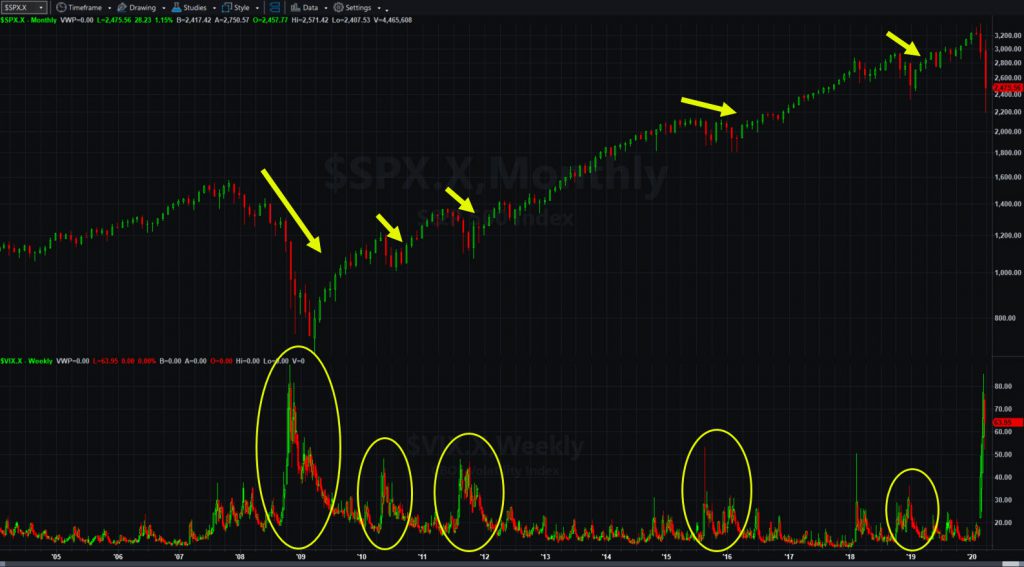The last month has been one of the most volatile in the history of the stock market. Here are some things to know if you’re new to investing and it scared you.
Volatility Increases When the Market Drops
Volatility measures how much stocks move. The more they jump around, the higher it is.
The most important point is that volatility almost always increases when the market is falling. In other words, stocks decline more rapidly than they rise.
There are several reasons why this is true.
First, many investors buy mutual funds rather than individual companies like Apple (AAPL) and Facebook (FB). These portfolios track large indexes like the S&P 500. When they get scared and liquidate positions, it drags the entire market lower.

Second, selling in one area can lead to more selling in another. Boeing (BA), for example, was one of the biggest decliners in recent weeks. Some investors might have purchased BA with borrowed money. They didn’t want to take losses, so they might have unwound other positions that were still up to reduce their leverage.
This kind of forced selling is known as a “margin call.” It can aggravate selloffs, as we’ve seen recently.
Volatility, Options and the VIX
Investors respond to declines by purchasing put options on the S&P 500. Puts gain value to the downside because they fix the price where investors can sell.
There’s always some demand for puts given the size of the equity market. But at times of panic, demand increases suddenly. That drives up the price of options.
Cboe’s Volatility Index, the “VIX,” measures the price of options. The VIX tends to rise when stock prices fall, which makes it a “fear gauge.”
If there’s anything for traders to learn about this selloff, it should be to watch the VIX. You may want to err on the side of caution when it’s rising. Be even more careful when it makes a new 52-week high.
On the flip side, you may want to think about putting money to work when the VIX is falling.
Volatility Can Frustrate Stock Pickers
Because forced selling can drag down the entire market, good companies often get hammered along with the bad. Everything may go down in unison.
This brings us to the second key lesson: Volatility increases the correlation between stocks. This makes picking individual names much harder.
Individual investors can respond to this by waiting for the VIX to decline. Then as the market calms down, they can look to buy individual stocks at lower prices.
In conclusion, here are three points to remember about volatility if you’re new to investing:
- Volatility usually increases when the market falls.
- The VIX measures volatility.
- Volatility makes it hard to pick individual stocks.























